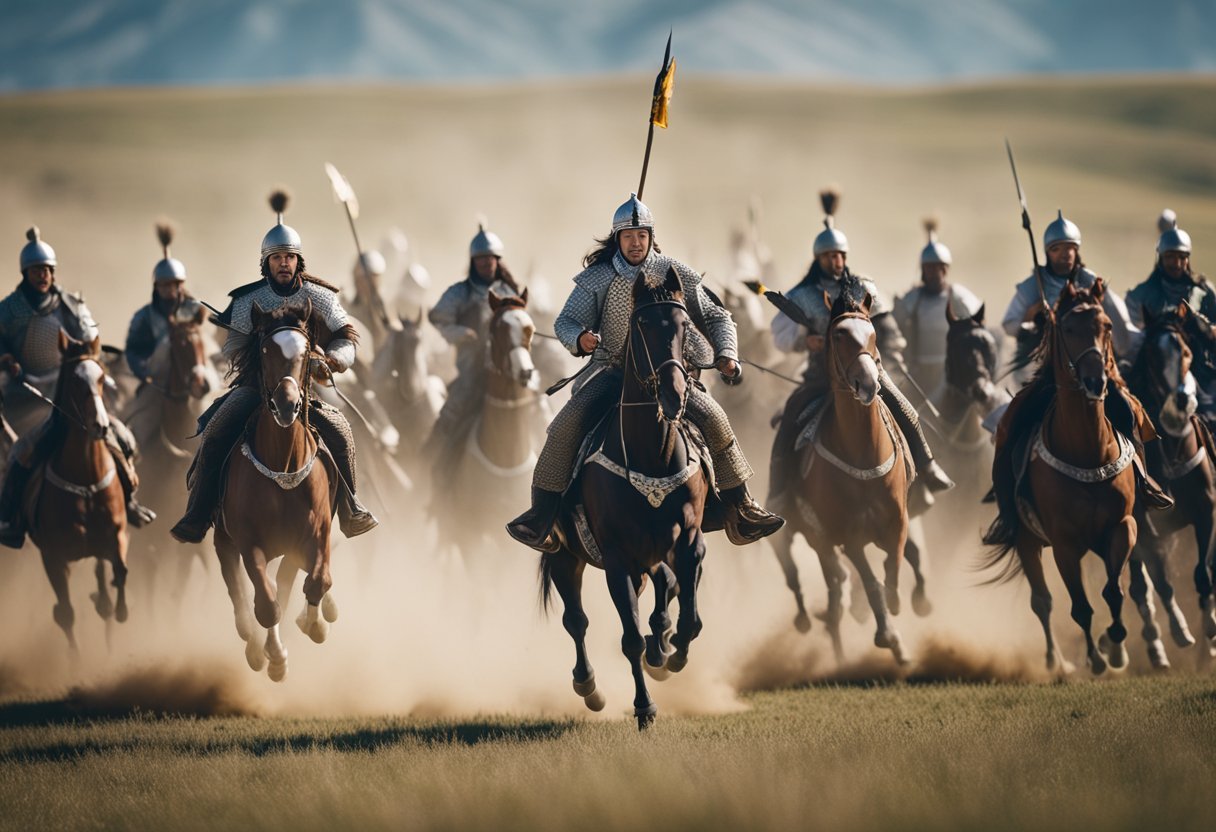Genghis Khan, originally named Temüjin, stands out as one of the most formidable warrior-rulers in history. He managed to unite the fractious nomadic tribes of the Mongolian plateau and went on to create the largest contiguous land empire the world has ever seen. His achievements transformed him from the son of a minor chieftain to the “Great Khan” of the Mongols.
Born around 1162, Genghis Khan was raised in the harsh climate near Lake Baikal, Mongolia. Through sheer determination and military genius, he overcame numerous obstacles, including betrayal and captivity. His strategy combined extraordinary tactical insight with brutal efficiency, which allowed his conquests to sweep across Asia, extending all the way to the Adriatic Sea.
The legacy of Genghis Khan extends beyond his military prowess. His efforts in consolidating Mongolia laid the foundation for a more connected world by promoting trade, communication, and cultural exchange across the vast territories under his rule. His influence can still be observed in modern global connections, highlighting the lasting impact of his leadership and vision.
The Rise of Genghis Khan

The early years of Genghis Khan, known as Temüjin, were marked by hardships and survival. Alongside, his strategic prowess and leadership eventually led him to unite the Mongol tribes and declare himself as the Great Khan.
Early Life and Origins
Temüjin was born around 1162 near Lake Baikal in Mongolia. His early life was tough, full of strife after his father, Yesugei, was poisoned by rivals. This left his family destitute and vulnerable.
Young Temüjin faced kidnapping, enslavement, and constant threats from enemies. Despite these struggles, he emerged resilient and resourceful. His ability to inspire loyalty in allies, and his marriage to Börte, helped solidify his standing and provided early political alliances.
Unification of the Mongol Tribes
Temüjin’s vision extended beyond mere survival. He sought to unify the fractious Mongol tribes under a single banner. Using a combination of diplomacy, marriage alliances, and ruthless military tactics, he began consolidating power.
The unification process was brutal. He defeated rival tribes like the Tatars, Naimans, and Merkits, absorbing their warriors and resources. His adapted military strategies, like incorporating enemy leaders who pledged loyalty, were key in building a formidable force.
Declaration as Khan of the Mongol Empire
By 1206, Temüjin’s efforts culminated in a kurultai, an assembly of steppe tribes, where he was declared Genghis Khan, meaning “Universal Ruler.” This title marked the beginning of the Mongol Empire.
This new era saw the implementation of laws and organizational structures to govern the vast territories. Genghis Khan emphasized meritocracy and loyalty. His leadership style transformed the Mongol military into a disciplined and efficient machine, setting the stage for future expansions.
In these early triumphs, the foundations were laid for what would become the largest contiguous land empire in history.
Military Campaigns and Conquests

Genghis Khan’s military campaigns were pivotal in creating one of history’s largest empires. His strategic brilliance and innovative tactics allowed the Mongol forces to expand rapidly into Central Asia and beyond.
Expansion into Central Asia
Genghis Khan began his expansive campaigns by first uniting the Mongolian tribes.
In 1206, he was declared the Great Khan. His forces moved quickly into Central Asia, defeating the Kara-Khitan Khanate and the Kyrgyz. These early victories were critical for securing the western frontiers and establishing control over the Silk Road, which was vital for trade and communication.
The Mongol forces were not only known for their speed and agility, but also for their brutal efficiency. They used psychological warfare, spreading fear and chaos before even engaging in battle. This often led to the swift surrender of cities and regions.
Invasions of Khwarezmia and Eastern Persia
One of Genghis Khan’s most notable campaigns was against the Khwarezmian Empire, which ruled parts of modern-day Iran, Turkmenistan, Uzbekistan, and Kazakhstan.
In 1219, after a series of diplomatic insults and an attack on Mongol traders, Genghis launched a full-scale invasion. The Mongol army, employing superior strategy and brutal tactics, quickly overran key Khwarezmian cities like Bukhara, Samarkand, and Nishapur.
The conquest of Khwarezmia was marked by siege warfare and the systematic destruction of cities. These tactics ensured the complete collapse of Khwarezmian authority and the incorporation of their territories into the Mongol Empire.
Strategies and Innovations in Warfare
Genghis Khan’s military strategies were revolutionary. He utilized highly mobile and disciplined cavalry units, which allowed rapid and flexible movement across vast distances.
The Mongol armies were organized in a decimal system, with units of 10, 100, 1,000, and 10,000. This structure facilitated efficient command and control during large-scale operations.
Another key innovation was the use of composite bows, which could be fired accurately from horseback. Mongol archers were trained from a young age, making them exceptionally skilled. Additionally, Genghis Khan implemented espionage and intelligence networks to gather information on enemies, contributing to their tactical advantage.
The Mongol Empire under Genghis Khan set new standards in military organization, strategy, and technology, leaving a lasting impact on the art of war.

